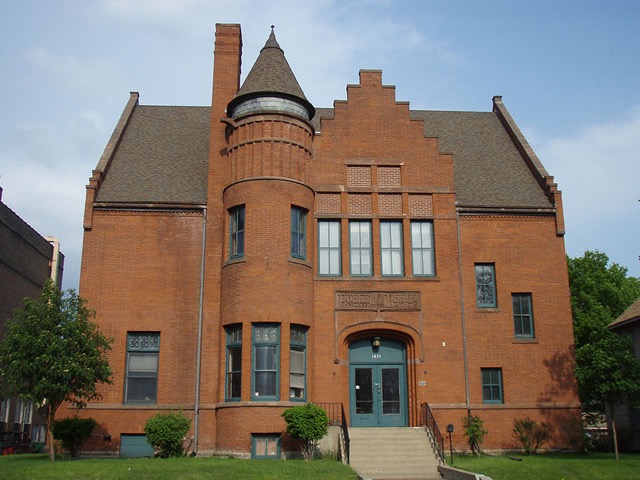
Since February is I Love to Read month I got to thinking about the beginnings of the Minneapolis library system. The Minneapolis library system dates back to 1885 when the Library Board was formed by an amendment to the city charter. The first library board commissioners were Thomas Lowry, John B. Atwater, M. B. Koon, Thomas B. Walker, Cyrus Northrup, Prof. Sven Oftedal, Edward M. Johnson and Minneapolis Mayor A.A. Ames.
Before there was a Minneapolis public library, there was a private library called the Minneapolis Athenæum. It was organized by Minneapolis businessmen in 1859 as a subscription library and its shares were traded on the local stock market. After business magnate Thomas B. Walker moved to Minneapolis he bought shares in the Athenæum and gave away memberships to it, promoting the idea of a free public library for the city. Some of the other stock holders raised objections, but the technique worked and soon the city financed a free library for the public with a one mil property tax. When the Minneapolis Public Library was established in 1885 the Athenæum became a partner of it and still exists as a separate nonprofit organization sharing space with the library. Library cards were issued to any city resident and books could be checked out free of charge. Non-residents needed to pay an annual fee of $1 to check out books.
The Minneapolis Central Library opened in 1889 on the corner of 10th St. and Hennepin Ave. downtown. It was a massive, castle looking, red stone building and I remember being awestruck walking up those stairs into the library as a kid. Library cards were issued to any city resident and books could be checked out free of charge. Non-residents needed to pay an annual fee of $1 to check out books. This central library not only housed books but also contained the art collection of Thomas B. Walker who would later be the namesake for the Walker Art Museum. There was also a science museum which, to much fascination of this kid as well as many other kids, included Egyptian mummies! There was a charge of 10¢ for adults and 5¢ for children for the museum.
Two branch libraries opened in 1890, one was on the north side in the basement of North Side High School making it the first public library outside of downtown. The other opened later on the south side of the city at 17th and Franklin. In 1893 the North Branch Library building, designed by architect Frederic Corser, opened at 1834 Emerson Ave. N. When the North Branch Library opened it was recognized as the first building in the county to be erected solely for use as an open shelf public branch library. By 1910, besides the Central Library, the Minneapolis Public Library system had 11 branch libraries and reading rooms as well as 15 library stations. These stations were often in schools such as Jordan Jr. High and Bremer School.
In 1959, the city decided that there needed to be a new more modern central library. A new very modern looking building was erected at 3rd and Hennepin. This new library building, which opened in 1961, not only contained the science museum items and mummies, but also had a planetarium. I must thank my 4th grade teacher, Miss Simmons, for taking our class to that planetarium when it opened – it was very exciting!
The grand building on 10th and Hennepin was unfortunately torn down, much to the dismay of many Minneapolis residents, including my mother. To this day that spot is just a parking lot. There are, however, two items from the original library in the current central library building. One is an ornate wooden arch and the other is the Minerva, Goddess of Wisdom statue. Thankfully, the beautiful North Branch Library building still stands on Emerson Ave. just south of West Broadway and is home to the nonprofit Emerge.


